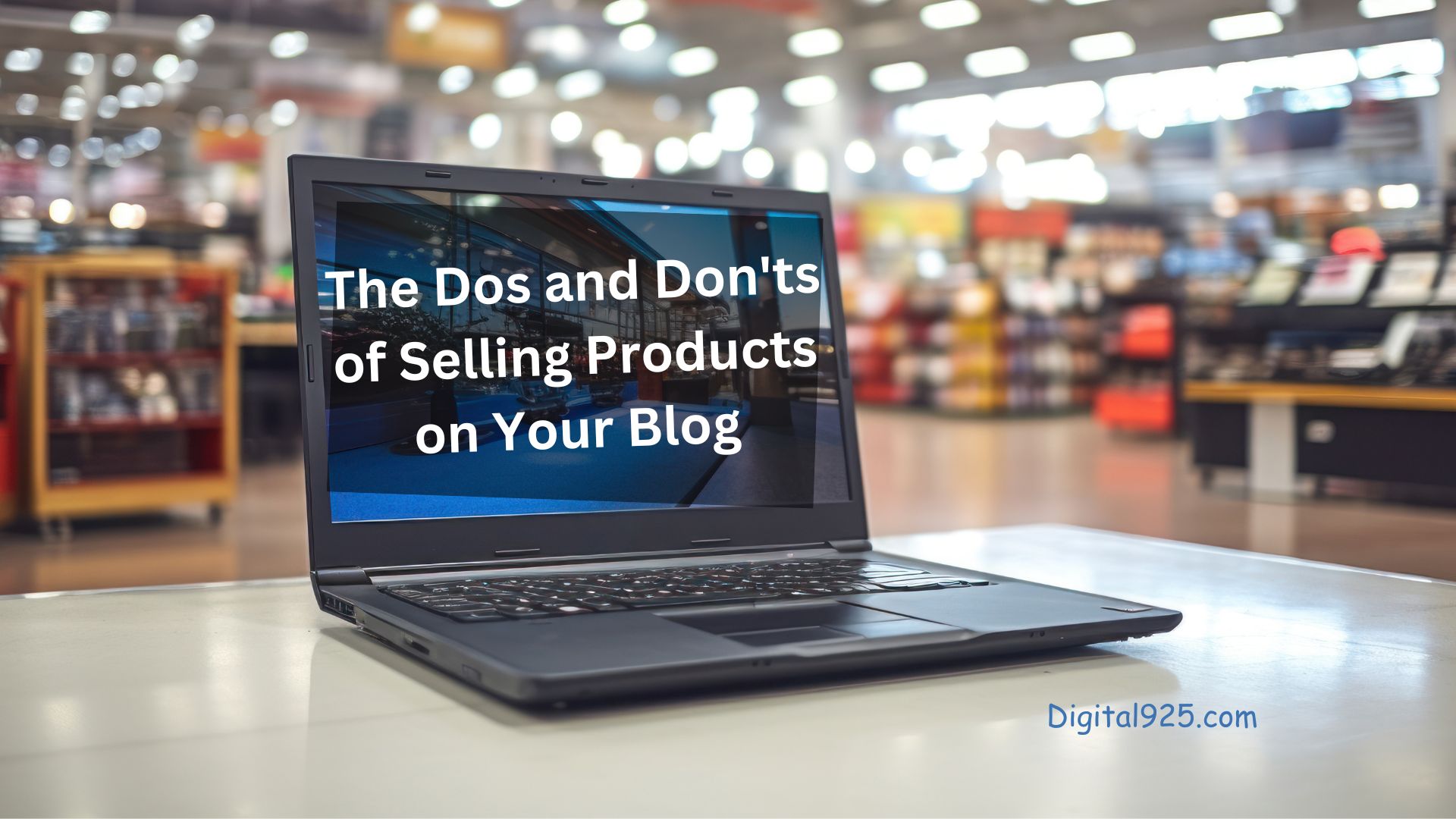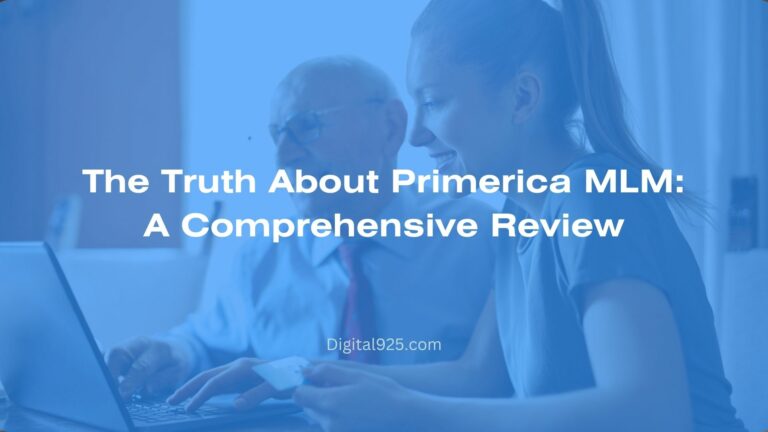The Dos and Don’ts, How To Sell Products On Your Blog
Selling products on your blog has become a popular way for bloggers to monetize their platforms and diversify their income streams.
It involves promoting and selling various goods or services directly to your audience through your blog. However, like any business endeavor, specific strategies and practices can either contribute to your success or hinder your efforts.
I understand the importance of leveraging your blog to maximize product sales. You can turn your blog into a powerful sales tool with the right strategies.
In this comprehensive guide, I will walk you through the steps to effectively learn how to sell products on your blog, ensuring you outrank competitors and drive revenue.
Dos of How To Sell Products On Your Blog
Understanding Your Audience
One of the fundamental aspects of how to sell products on your blog is understanding your audience.
Knowing their demographics, interests, and pain points allows you to tailor your product offerings effectively to meet their needs.
Conduct thorough market research to identify your target demographic and their purchasing behaviors.
Utilize tools like Google Analytics and social media insights to gather valuable data.
Choosing the Right Products
Selecting the right products to sell on your blog is essential for success.
Consider products that align with your blog’s niche and cater to your audience’s interests.
Conduct product research to ensure you offer high-quality items that provide value to your customers.
Creating Compelling Product Descriptions
Crafting compelling product descriptions is key to capturing your audience’s attention and driving sales.
Write clear, concise descriptions highlighting each product’s benefits and features.
Use persuasive language to entice readers and encourage them to make a purchase.
Optimizing Your Blog for Conversions
Optimizing your blog for conversions is critical for increasing sales.
Utilize compelling call-to-action (CTA) buttons strategically placed throughout your blog posts.
Implement responsive design to ensure seamless browsing experiences across all devices.
Leveraging Visual Content
Incorporating visually appealing content can significantly enhance the sales process.
Utilize high-quality images and videos to showcase your products in action.
Create engaging product demonstrations and tutorials to demonstrate value to your audience.
Implementing SEO best practices is essential for increasing your blog’s visibility and driving organic traffic. Conduct keyword research to identify relevant keywords related to your products.
Optimize your blog posts and product pages with targeted keywords, meta tags, and descriptive URLs.
High-Quality Content Creation
Content is king in the blogging world, and creating high-quality, engaging content is essential for attracting and retaining your audience.
Your content should provide value and build trust with your audience, whether through blog posts, videos, or podcasts.
Strategic Product Placement
Strategic product placement is critical to maximizing your sales potential.
Highlighting your products in relevant blog posts, creating dedicated product pages, and utilizing eye-catching visuals can help draw attention to your offerings.
Driving Traffic Through Content Marketing
Content marketing is a powerful strategy for driving traffic to your blog and increasing product sales.
Create valuable, informative content that addresses your audience’s pain points and provides solutions.
Promote your blog posts across various channels, including social media, email newsletters, and industry forums.
Utilizing Affiliate Marketing
Affiliate marketing can be a lucrative strategy for bloggers looking to sell products without the hassle of inventory management or customer service.
By partnering with relevant brands and promoting their products to your audience, you can earn commissions on sales generated through your affiliate links.
Offering Value through Product Reviews
Product reviews are a powerful tool for influencing purchasing decisions.
By providing honest and thorough reviews of products relevant to your niche, you can establish yourself as a trusted authority and encourage your audience to purchase.
Optimizing for SEO
Search engine optimization (SEO) is crucial in driving organic traffic to your blog and increasing your visibility in search engine results.
Optimizing your product pages and blog posts for relevant keywords can help attract qualified leads and improve your chances of making sales.
Promoting Your Products on Social Media
Social media platforms offer a valuable opportunity to promote your products and engage with your audience more personally.
You can create buzz around your offerings by sharing product updates, behind-the-scenes content, and customer testimonials and drive traffic to your blog.
Analyzing and Optimizing Performance
Regularly analyze your blog’s performance to identify areas for improvement and optimization.
Monitor key metrics such as traffic, engagement, and conversion rates. Use A/B testing to experiment with different strategies and determine what resonates best with your audience.
Building Trust with Your Audience
Building trust with your audience fosters long-term relationships and drives repeat sales.
Publish honest product reviews and testimonials to showcase the positive experiences of satisfied customers.
Offer transparent pricing and shipping information to instill confidence in your brand.
Providing Excellent Customer Service
Customer satisfaction is paramount in the world of online business.
Providing prompt and helpful customer service can go a long way in building trust and loyalty with your audience, ultimately leading to repeat purchases and positive word-of-mouth recommendations.
Don’ts of How To Sell Products On Your Blog
Over-Promotion
While promoting your products effectively is essential, bombarding your audience with constant sales pitches can be off-putting.
Strive for a balance between promotional and value-driven content to avoid alienating your audience.
Ignoring User Experience
A seamless user experience is critical for converting visitors into customers.
Ensure that your blog is easy to navigate, mobile-friendly, and optimized for fast loading speeds to provide a positive experience for your audience.
Ignoring Analytics
Analytics provide valuable insights into the performance of your blog and product offerings.
By regularly monitoring metrics such as traffic, conversion rates, and customer behavior, you can identify areas for improvement and make data-driven decisions to optimize your sales strategy.
Inconsistent Posting
Consistency is key to maintaining momentum and keeping your audience engaged.
Irregular posting schedules can lead to a drop in traffic and engagement, ultimately impacting your sales potential.
Choosing Irrelevant Products
Selecting products that align with your blog’s niche and audience interests is essential.
Promoting irrelevant or low-quality products can damage your credibility and erode trust with your audience.
Neglecting Customer Feedback
Listening to your customers is vital for improving your products and services.
Actively seek feedback from your audience and consider their suggestions when making decisions about your product offerings and marketing strategies.
Neglecting Legal Aspects
Learning how to sell products on your blog comes with legal responsibilities, including compliance with consumer protection laws, data privacy regulations, and taxation requirements.
Neglecting these legal aspects can result in fines, lawsuits, and damage to your reputation.
Conclusion
If done correctly, learning to sell products on your blog can be a lucrative venture.
By following the dos and don’ts outlined in this post, you can maximize your sales potential, build trust with your audience, and create a sustainable source of income for your blog.
Focus on understanding your audience, choosing the right products, and implementing SEO best practices to drive success.
With dedication and perseverance, your blog can become a lucrative sales channel for your business.
FAQs
Q1: Can I sell any product on my blog?
Yes, but to maximize your sales potential, it’s essential to choose products that align with your blog’s niche and audience interests.
Q2: How often should I promote products on my blog?
Strive for a balance between promotional and value-driven content to avoid overwhelming your audience with constant sales pitches.
Q3: Is affiliate marketing a good strategy for blog product sales?
Affiliate marketing can be a lucrative strategy for bloggers looking to monetize their platforms without the hassle of inventory management or customer service.
Q4: How can I ensure legal compliance when selling products on my blog?
To ensure legal compliance, stay informed about consumer protection laws, data privacy regulations, and taxation requirements relevant to your location and industry.
Q5: What role does customer feedback play in selling products on a blog?
Customer feedback is invaluable for improving your products and services, enhancing customer satisfaction, and building long-term relationships with your audience.







